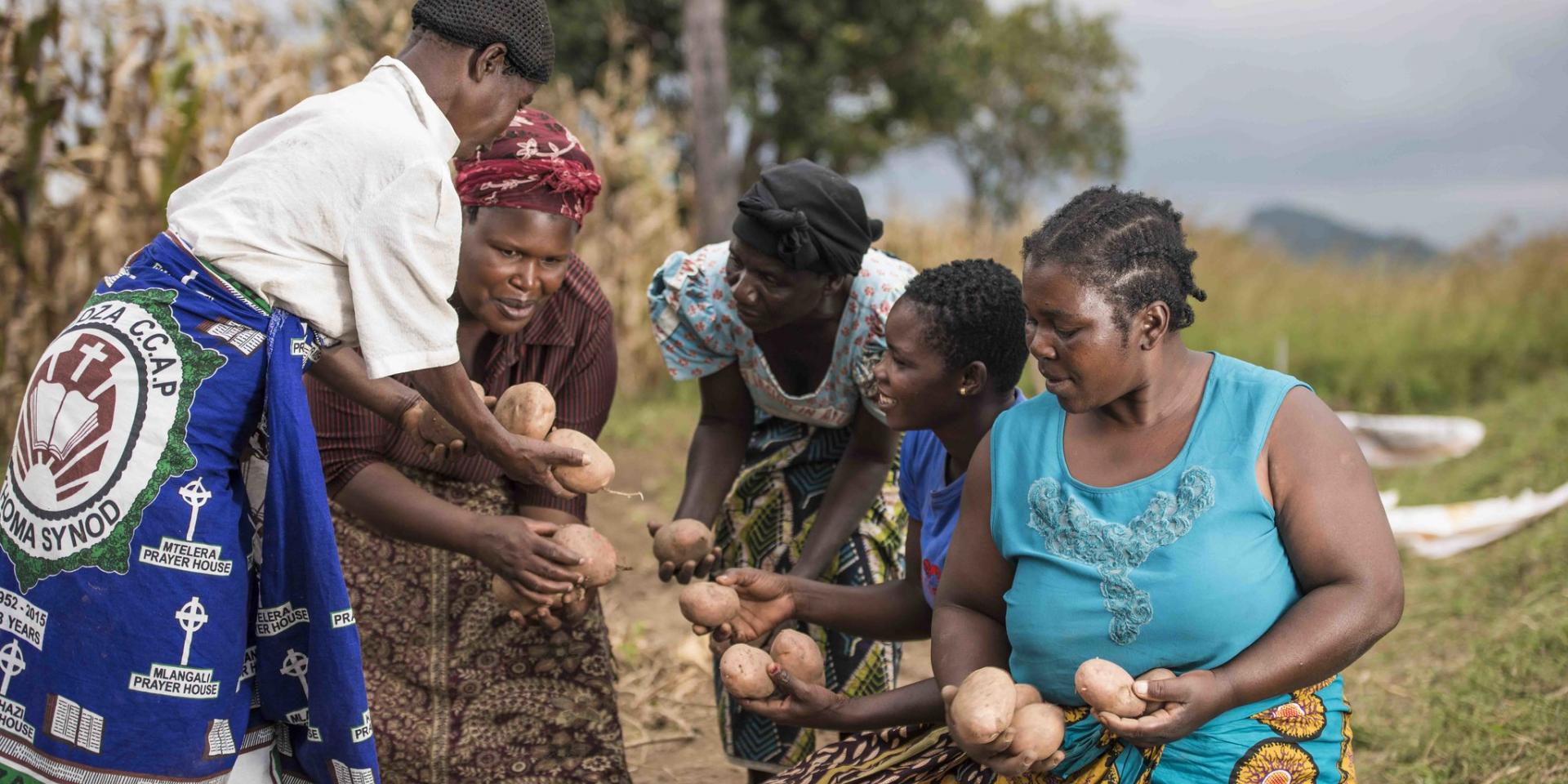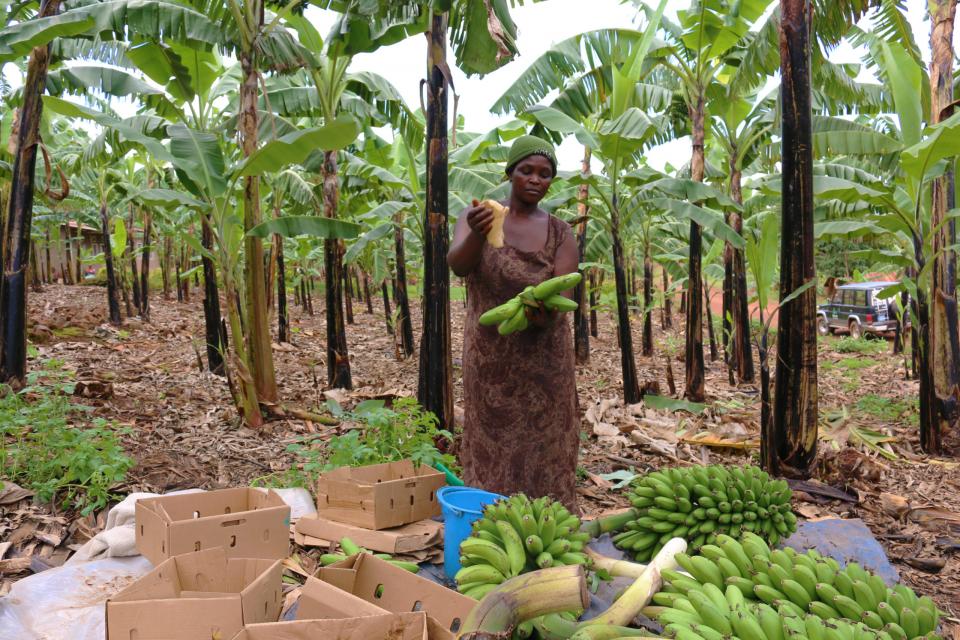When is choice empowering?
 Photo: CIP
Photo: CIP
In Uganda, plant breeders adjusted new matooke hybrids for sensory quality traits that women were concerned about, such as yield and pest and disease resistance.
Plant breeders thought they were on the right track when they released a new hybrid variety of matooke, a variety of plantain which is an important food crop in Uganda.
But they missed something …
The men and women of the region didn’t like the new release, but for different reasons. Men were concerned about traits, like the taste, that affect marketability. Women were more concerned about cooking quality. The new hybrids hardened quickly and took a long time to cook.
The breeders went back to the drawing board and changed the sequence of trait selection. They decided to first evaluate and select new matooke hybrids for sensory quality traits that women were concerned about such as yield and pest and disease resistance. By shifting the focus to women, the breeders provided women the option of choosing new varieties that do not demand more of their labor.
The matooke case study, cited in a recently published paper in Sustainability, highlights how plant breeders can structure the choices of men and women producers adopting an improved crop variety when breeders set trait priorities.
“Because they can decide whether or not to select for plant traits valued differently by men and women, breeders have the ‘power to’ determine the gender balance of meaningful choice, and whose choice is restricted,” says lead author Vivian Polar, a gender and innovation specialist with the CGIAR Research Program on Roots, Tubers and Bananas (RTB). “But simply having a choice doesn’t always lead to empowerment.”


